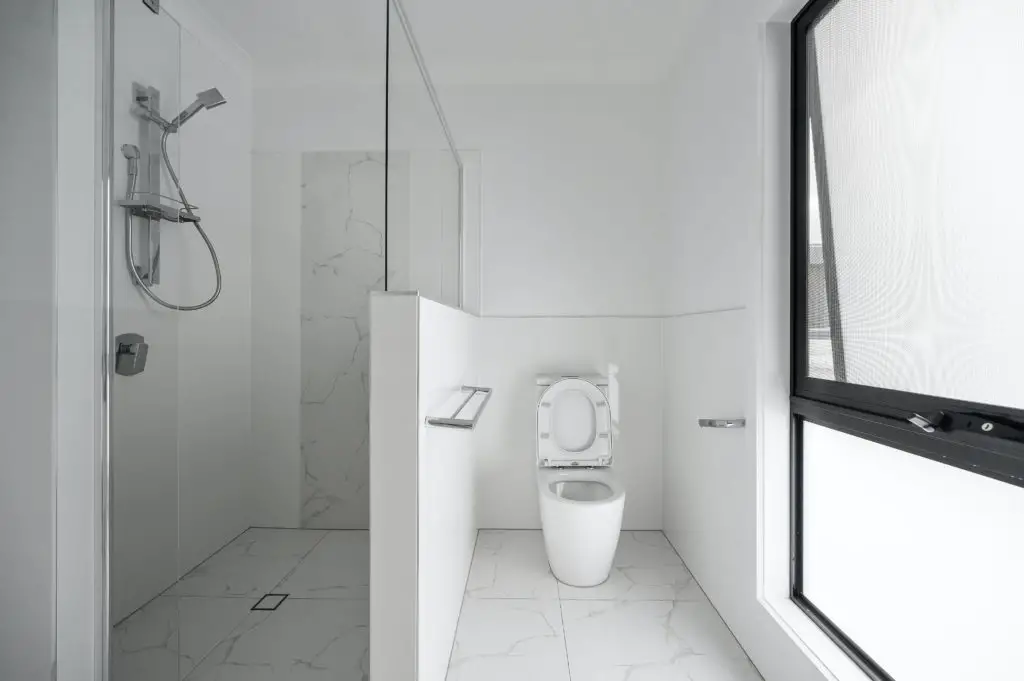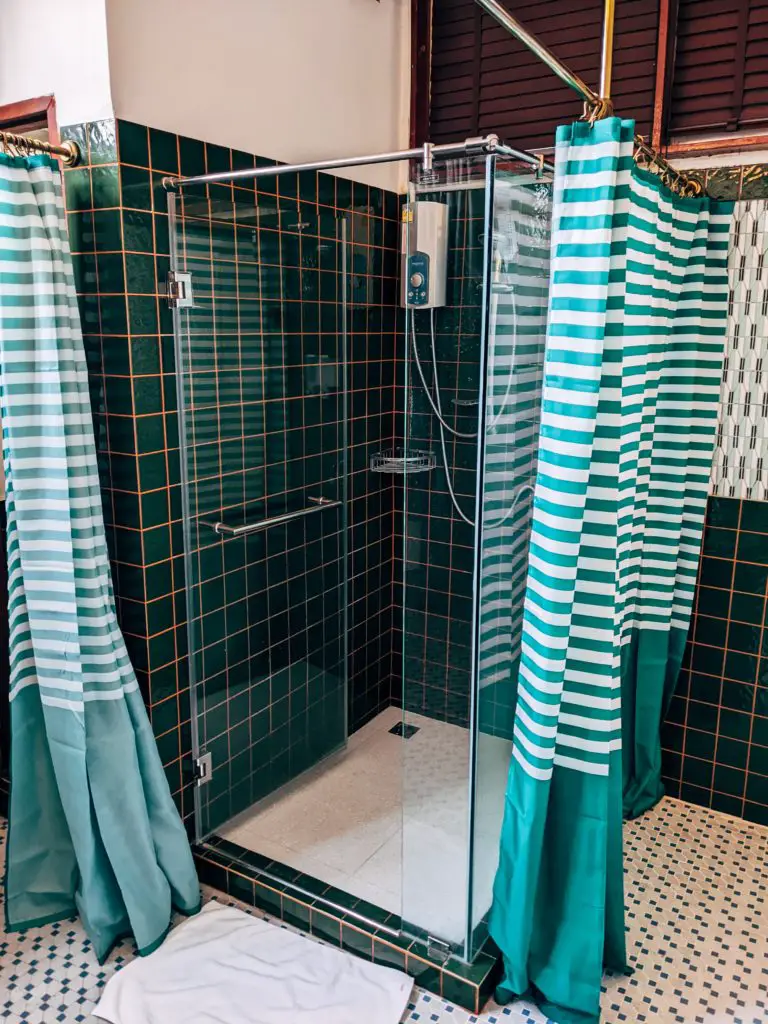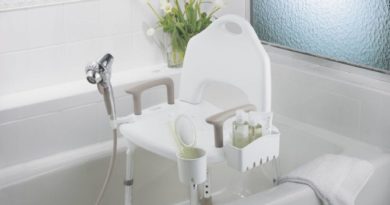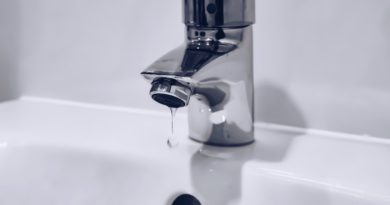Is Drano Safe for Shower Drains?
**Articles may contain links that I earn compensation for if clicked and you make a purchase. As an Amazon Associate, I earn from qualifying purchases. These earnings do not actually impact the price of the product or service.
Clogged drains are common in many households but are still a big nuisance. It’s even worse when water accumulates on your bathroom floor because it doesn’t drain properly.
If you have a clogged shower drain, you most likely have used several methods to unclog it but have you tried Drano? You might have heard that Drano Max Gel is one of the most effective solutions for a clogged drain, but is it safe?
Besides being an excellent unclogging solution, Drano is highly corrosive. Therefore, the manufacturers recommend that you don’t use it on a clogged toilet since it could corrode the toilet’s interiors.
However, they approve of its use on your shower drain. Plumbers have also praised the product claiming it is an excellent solution to clean clogged and slow-draining shower drains.

Table of Contents
What Is Drano, and How Does It Work?
Drano is an active ingredient in many drain treatments marketed to consumers today. It’s available in liquid and powder form, adding polymers to your sink or toilet water. Over time, things like hair, soap scum, and mildew begin to build up around the pipes in your bathroom, causing the water to flow slower.
Drano is practical and affordable; you can use it on metal pipes and PVC. You can also use Drano on standing water, and the bleach will help break down soap scum, hair, and other debris.
To achieve this, pour at least 16 ounces on your shower drain and let it sit for about 15 minutes. Flush the drain with boiling water and repeat as much as possible.
Why Do Shower Drains Clog?
Your shower drain may clog due to various reasons. For example, if you or others who use the bathroom have long hair, the hair deposits could result in a drain clog. Hair is one of the most common causes of a clogged drain since it is hard to break down.
Additionally, it easily knots up, combines with soap, and attaches itself to the plumbing pipes of your bathroom sink and shower or tub drain, forming clogs. To remove these deposits, you need to use strong chemicals or seek the help of a professional plumber.
Another cause of clogged drain is the soap scum accumulating in your shower drain with time. As a result, the diameter of drainage pipes reduces, leading to slow draining or total blockage. Moreover, soap combines with hair or dirt in the drainage area, clogging your shower drain.
When you use oily products in your shower, the oil solidifies in the septic system, causing a clog. So, you will need a solution like plunging or using detergents and hot water to melt the solidified oil. If this doesn’t work, you can try a commercial drain cleaner like Drano if this doesn’t work.
With the hair deposits, soap scums, and grease found in shower drains, washing dirt through the drain might cause clogging. The dirt and all these deposits combine within the drainage pipes, contributing to clogs.
Alternatives to Using Drano to Unblock a Clogged Shower Drain
 While you can use Drano to unclog drains, you can try alternative methods like:
While you can use Drano to unclog drains, you can try alternative methods like:
Natural Cleaners
Besides Drano, you can use natural drain cleaners like baking soda and vinegar. To make this DIY cleaner, mix the baking soda in a ratio of 1:1, regardless of the brand.
Start by pouring boiling water through the drain to loosen the clogs, then pour the mixture, which breaks the clogs. After about 15 minutes, pour more boiling water to wash away the clogs.
Drain Snake
This method involves a plumbing tool called a drain snake. Although messy, it effectively cleans drain clogs, including shower drains.
Drain snakes are metallic or plastic; you can find them in any plumbing store. It comes in a rectangular shape and is flexible enough to go through drainage pipes. Push the drain snake through the drain and pull up the debris that hung around it.
Boiling Water
Unclogging drains with boiling water is a simple method that you can use if the shower drain clog isn’t very hard. If you want to clear your shower drain, try boiling water before anything else. Pour hot water repeatedly through the drain to unclog until you flush out all the debris from the drain.
Unclog By Hand
Not all clogs are stuck in the septic systems; some are on the surface of your shower drain, and you can remove them by hand. All you need is a pair of gloves, and you can use some plastic hooks meant for unclogging. Avoid metallic hooks as they could damage your shower drain.
Use a Plunger
Most people’s go-to method to unclog drains is using a plunger. Pour water into your bathtub, place the plunger on the drain and plunge the drain severally until the water flows through freely.
Call a Plumber
If none of the above methods worked, consider getting help from a professional plumber. They know how septic systems work and can uninstall and install them back after removing the clogs in your drain.

Ways to Prevent Shower Drain Clog
You can prevent your shower drain from clogging by taking preventive measures. These include:
Correct Drain Maintenance
Ensure that drain cleaning is part of your daily routine. You can try essential drain cleaners like the mixture of vinegar and baking soda and regularly pour them through the drain after several showers. After running the combination, pour hot water.
Avoid Regular Use of Body Scrubs
Although bathing products make you feel good and relaxed, most of them are oily and end up in your bathroom’s drainage system. These oils harden while in the drain, causing a clog. Therefore, avoid oily products in the shower.
Keep Off Excess Waste
An irresponsible garbage disposal may result in standing water in your bathroom. Therefore, avoid emptying, cleaning your rug in the bathroom, or washing dirt down the drain. The dirt might look harmless, but it can accumulate and make nasty clogs in the long run.
Use a Drain Cover
A drain cover is one of the most convenient methods of preventing clogging. The cover is either rubber or plastic and affordable, and it helps trap dirt and strands of hair before they go through your septic system.
Conclusion
Drano has been the leading drain cleaner brand for many years. If you plan to use Drano on your bathtub or bathroom sink, ensure that it doesn’t have materials that Drano can damage since it is highly corrosive. Regardless of this setback, Drano is an excellent drain cleaner if used correctly.
Drano is an active enzyme cleaner that helps dissolve clogs and clean drains. It also removes hair and grease from the pipes, preventing clogs and backup drains. However, we recommend you start with simple methods to unclog your tub first and go for Drano if they fail.
Most importantly, ensure that you keep your bathtub clean at all times. Also, avoid throwing dirt in the bathroom intentionally since it could result in clogging.


